#i redid two of these these designs like over 6 months later when i remembered this project existed
Photo
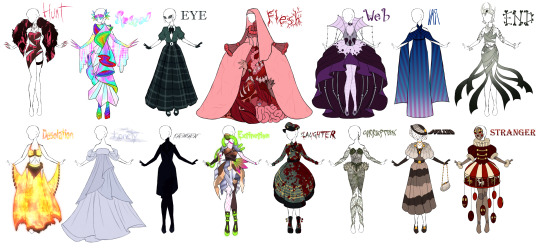
This was a long project of mine, to design a dress for every Entity within TMA. With my limited knowledge of the series it turned out really fucking cool. Close ups of each one will be under the cut
Outfit base was made by scarlett-knight on deviantart



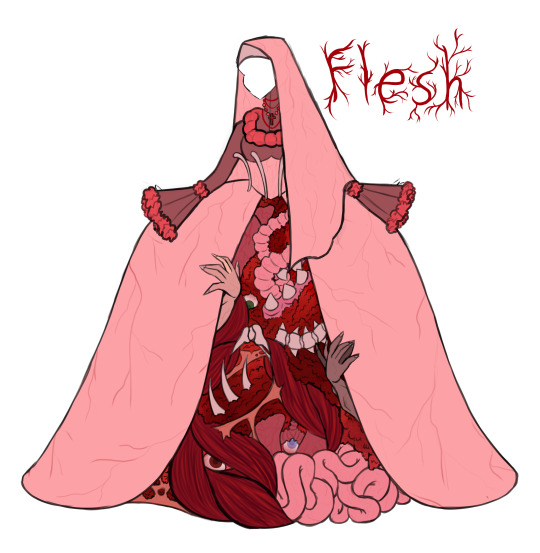

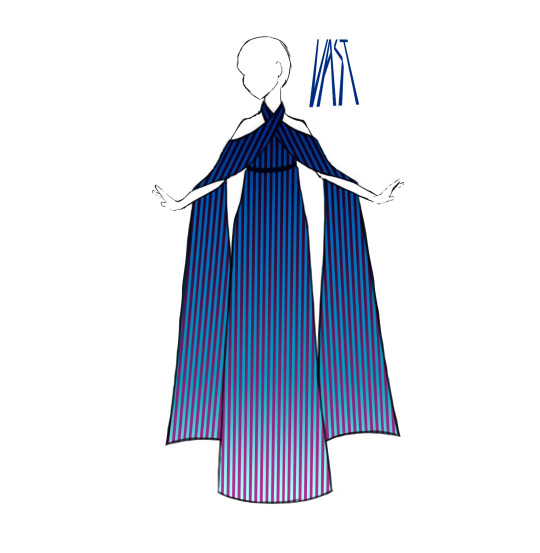


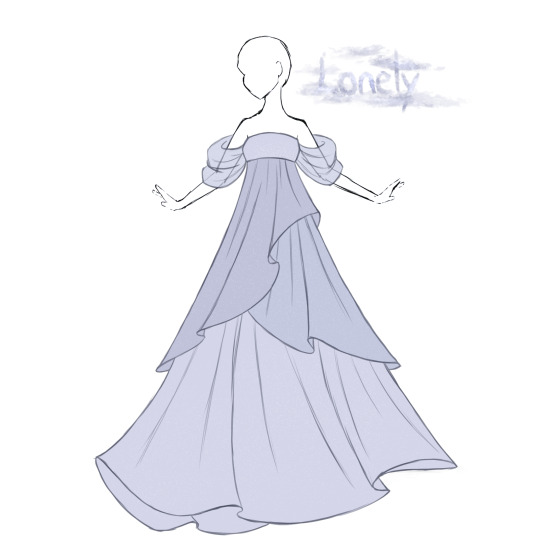

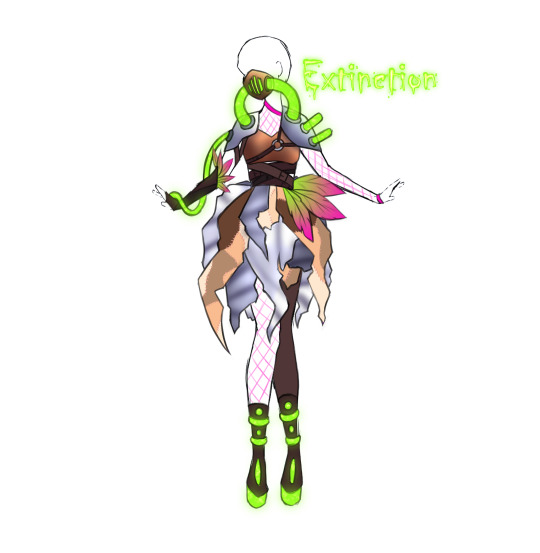
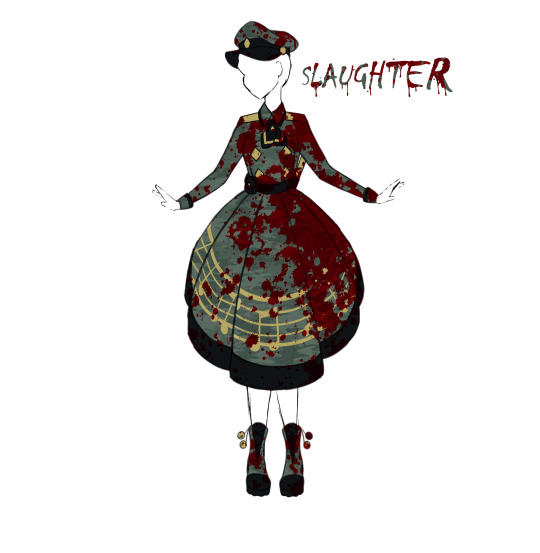
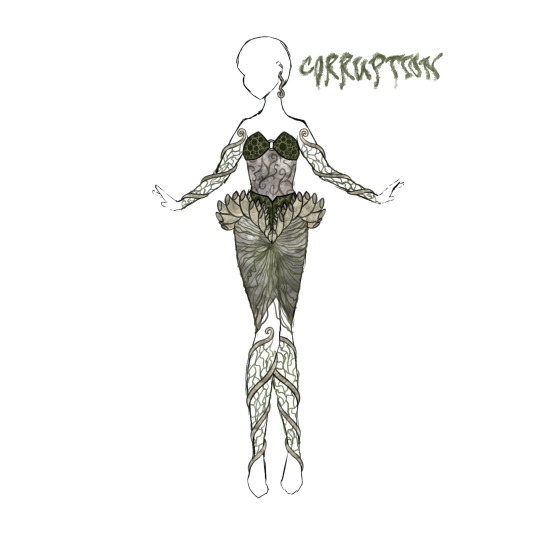
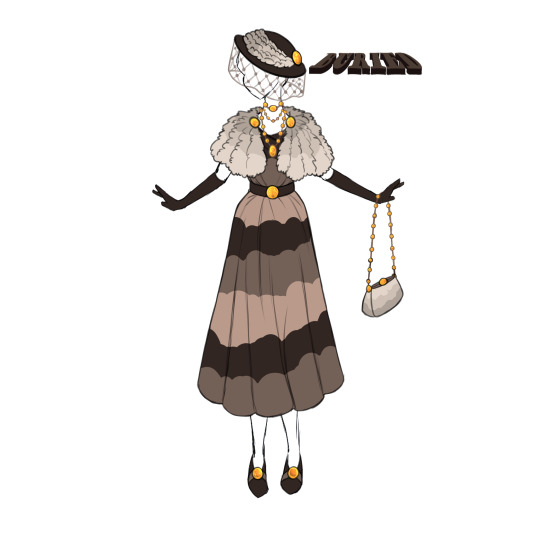

#tma#the mangus archives#tma entities#art#dress designs#im so fucking good at tagging guys#i redid two of these these designs like over 6 months later when i remembered this project existed#tw gore#tw blood#tw body horror#if i miss any tw let me know i'll add them#tma the hunt#tma the spiral#tma the end#tma the flesh#tma the web#tma the vast#tma end#it wouldnt let me say the end idk why#tma the desolation#tma the lonely#tma the dark#tma the extinction#tma the slaughter#tma the corruption#tma the buried#tma the stranger
250 notes
·
View notes
Text
How Did That Hold Up? (Vol. 6)
Hi friends! It’s time for an updated “How did that hold up?”. We do these posts every couple of years to share what held up amazing and also anything we regret! One of the tough things about DIY is that you don’t REALLY know how long it will last until years later. So that’s what I am going to get into today!
Note: All these photos are NEW from this summer (so there are years of wear on most of these projects, besides the gold closet rods, since they are more recent).
My Color Washed Floors <— view the full post here.
I asked for requests on IG and far and away this was the most requested update from my home. We did these floors three summers ago before we moved in. And I am happy to report that they have held up FLAWLESSLY. There is no damage whatsoever. They are just as strong as the other wood floors in our home.
I do feel like I have to note, though, these are NOT just painted floors. It it NOT a good idea to paint your floors with wall paint … that will not hold up! Make sure you read the whole post before trying it. The key factors are that I had a professional flooring guy do them AND they are sealed exactly like all the other floors in our home.
The photo above doesn’t do them justice so I will show more on stories. But they look awesome!
As far as do I still LOVE the color … I do. But I will admit that I go back and forth. Sometimes, I wish they were the same as the rest of the house. But a lot of the time, I love the bold pop in this one room. So I do not plan to change it as long as we live here.
That said, I not sure what I will do when it’s time to sell our home someday—my sister says to leave it because the next owners may love it. I am afraid it could scare people off (and it’s not very expensive to change back so I don’t want that!). What do you think? Would that scare you off if you were house shopping?
Anyway, it doesn’t matter right now because we LOVE it. And this project TOTALLY held up. I am so happy! It could be done in any color … the possibilities are endless!
Our DIY Dining Room Table
This table has been going strong for SO LONG … since 2012! Not bad for a $350 table that seats eight! I still love this table and for the style of our decor and the function of our home, I cannot imagine anything better!
We do paint it about once a year because it gets scratched. But I don’t think that is a big deal for a piece of furniture that is so heavily used.
I still love it SO much and have had zero desire to shop for a new table, and for the past six years we have been using this one.
Gold Closet Rods
I will be honest … I was NERVOUS about this! It worked so well in Nova’s room but then in my room it was a disaster. So we redid it with this paint and now, after a few months, it has ZERO scratches (the last time it scratched up immediately). The difference is the better product, but I truly believe it is also the one week cure time (before any clothes were hung on it). If you do this project (or any other spray paint project that is going to be handled a lot), you need to let it cure.
Very, very happy about this so far, but in a year I will know for SURE whether it is a winner. But it’s looking VERY promising after about two months.
Our Recolored Appliances
These are holding up. I am confident they will last until we move (and beyond). We paid $400 for the vinyl, which was custom printed with the color we chose and that also included installation.
I am happy with the colors. There are small flaws in the installation that bother me a little. The company that did it for me were definitely used to doing, like, band posters on the side of tour buses and jobs like that, so I am not surprised that they weren’t up to my level of perfectionism. Honestly, they were a hassle to communicate with, but the end result was worth it!
The vinyl is easy to clean and has aged really well (there aren’t any issues really). And when we sell our home, if the next owner doesn’t want the mint color, they can be peeled off super easily.
So, all in all, I would recommend the project because we saved thousands compared to the specialty appliance brands that offer colors AND we still have the option of going back to neutral if we wanted to.
Hopefully, for anyone else who takes on this project, you’ll get lucky and find a local vendor who is a little easier to work with. But honestly, even just having the photos of our appliances to show them will help!
Also, I will say that it’s totally possible to do the install yourself. But you would just want to make sure you use vinyl that is made for cars because it can safely go up to a very high heat and you need that for the oven.
Pink Bunk Beds
The pink bunk beds were a good decision. We bought these affordable bunk beds from Amazon, painted them with pink oil-based paint and then added these felt succulent window boxes. We’ve used these beds A LOT and now that I’ve tried it I highly recommend bunk beds like these for a guest room.
Closet Organization
I still love and appreciate this simple closet organization we installed every day. It basically took a blank wall and made it useful for storing hats, necklaces, scarves and bags.
I have to say, organization DIYs are SO WORTH IT. My closet and also pantry renovation are two of the best things we did to make better use of the space we have.
Cactus Stenciled Wallpaper
This project was a good amount of work—one of the most time consuming DIYs in our home. But I still love it and there have been no issues with it whatsoever. It still looks just as good as the day we completed it. I would totally do this project again in the future. The gold paint pen makes it look really cool.
A few other projects people asked about …
Stick on Subway Tile (in our laundry room)
I’m not sure when it happened, but we recently noticed that ONE block of tile from the peel & stick tile had turned yellow. Just one. And it was pretty noticeable. I have no idea why or how just one piece of the tile changed colors, but I was pretty disappointed! I probably would not do it again now just because I would be afraid of that happening again. It did save money to do the stick-on tile (on install), but it didn’t really save supply money. So it wasn’t one of those DIYs that could save you a huge chunk of money. I will go back and update that post with this new info about the color change.
I’m not saying that all peel & stick tile is problematic, because I am sure it isn’t. But I would no longer recommend what we used.
Luckily, we were already considering a more thorough renovation (we had never renovated this room, just changed a few finished when we first moved in). So it was pretty good timing for us. And what is kind of crazy is that I ended up choosing shiplap and it was less than half the price of the peel & stick tile.
Live and learn!
Chalk Paint Rainbow Wall
A few people asked why we painted over this wall. It wasn’t because there was anything wrong with it. In fact, I really miss it and kind of regret painting over it.
But the reason I made that choice was because when I was designing the playroom I really wanted to use this leftover juju wallpaper I had on just one wall and it seemed crazy to have two statement walls in one room. So the wallpaper won.
The problem with the rainbow was that I did it before I knew what I was doing with the rest of the room … so it didn’t fit.
It’s still an awesome DIY and I hope some of you do it for your homes!
Faux Tile in Jeremy’s Entryway
This still looks perfect! I don’t have a photo on my phone, but I’ll show it on IG stories. It is a very tedious project, but Collin did an amazing job! Since the space is covered and low-traffic, it hasn’t to be touched up yet. It’s lasting really well and really makes the space a lot more special and thought out.
White Walls and Light Floors
I had a few questions on whether I ever regret having mainly white walls and floors and whether they are difficult to clean. I love them and I do think they hide mess a lot better than dark floors—especially since we have a lot of white-based rugs (that shed furballs) and a light colored dog.
ZERO regrets on the floor and I would totally do it again.
As for the walls, we do mainly use matte paint, so they do get smudged and scratched easier than semi-gloss. But I don’t mind a once yearly touch up and magic eraser (or just a wet washcloth) gets most of it.
I love living in an mainly white home! The only things I honestly EVER think about changing are the colored accents. Like our pink bathroom vanity or yellow guest room. I love them and they are some of the most “shared” photos from our home, but I do get an itch to change bold accents so so so much sooner than neutrals.
In our next home (which is years off, but I am still a psycho who loves to plan five years in advance…), I may consider a more high contrast look. Mainly because I had so much fun using those colors in our bnb home.
To answer the question though, white walls + light floors forever & always!
Thanks for reading!!! I am happy to talk about any other project you are curious about in the comments. Every design project is a learning experience for me and I don’t believe there is ANY shame in regretting a project once in a while or wanting to do it differently the next time. I know this post was mostly positive experiences, but that is also because the projects I remember to recap years later are the ones I use for years so they stay at the top of my mind!
These projects can be so intimidating so I hope these recaps of how things have held up are helpful. xx – Elsie
Credits/Author: Elsie Larson. Photography: Amber Ulmer. Photos edited with A Color Story Desktop.
from RSSMix.com Mix ID 8265713 https://ift.tt/2Ne9Tuy
via IFTTT
0 notes
Text
This Guy Lives Sideways In A Blown 1968 Hemi Dart!
You have to give the young guys of Bob Welling’s generation a lot of credit. While Detroit unleashed muscle on America, he was among the tens of thousands of guys in Vietnam as a U.S Marine. The honor they deserved took decades to become evident thanks in part to those who wouldn’t serve back then, but today real Americans honor that great sacrifice. Before he headed over for his service, a trip to the newly opened Palm Beach International Raceway in southern Florida had sealed his love for power.
“The track had opened in 1965 and we went,” he recalls now. “Right away, I was awestruck at how dominant the Hemi engine was. Now I was still a Chevy guy at heart, so as soon as I got back from Vietnam, I bought a ’66 SS396 Chevelle, but within six months I had traded that in on a 1969 383 cubic-inch Road Runner. I was actually looking to replace the Chevelle from those days when the Dart came up in 2014.”
As many know, the Dodge Dart’s most vicious legacy came in 1968, when Tom Hoover and his crew at Chrysler Engineering launched their own all-out land invasion. The largest street engine available at the 1968 introduction came in the GTS, a 383 model. Later that same model year, Mr. Norm Krause had a short batch built with 440 power, but the Hemi-powered examples would be the trend setters. Created and developed with the idea of fitting exactly into the NHRA weight break for SS/B (6.00-6.49 pounds per horsepower), incomplete 383 Darts went to subcontractor Hurst Industries for modifications solely for racing. This included lightweight body parts, spartan interiors, drag-strip only drivetrains, and the final factory release of the legendary cross-ram Race Hemi. Due to the weight requirements, the engine was fairly straight forward, with a stock cam, heads, and oil pan, knowing the racers would do their own things to get them ready for action. The Hurst changes meant the cars were no longer highway legal, and a disclaimer stating this was part of the sale.
These 80 or so cars and a similar group of sister Barracudas dominated the highest echelons of the sport for years. Today, the originals have left their own street legacy thanks to cars like the one Bob would purchase decades later, a tribute design that featured a Hemi engine conversion. In this case, a later Mopar Performance 472 cubic-inch crate engine and some of the other changes the cars received had been added. Though the body itself was still all-steel, the turn-key car represented those glory days of Bob’s past.
“I had a 2009 SRT Challenger that I was already drag racing twice a week at Palm Beach International Raceway,” he says. “The Dart was not going to be a racecar; it would be my street car.
I always wanted a Hemi, and this would get that out of my system.”
The biggest problem upon purchase was some irritating piston rattle during warm-up. That was one reason why Bob had his mechanic friend Kenny Morrison, owner of K-Tech Automotive, Inc. in Loxahatchee, Florida, take a look at it. In turn, Kenny took Bob for a ride…
“Yeah, he had this supercharged ’56 Chevy with a big-block in it,” Bob laughs. “In fact, every car he has is supercharged, even his motorcycle, so he talked me into it. Actually, he took me out for a drive, and I was convinced on the idea of the blower right way!”
Blown street machines have always been a special breed. Kenny actually owns a blown ’34 Plymouth and a blown Hemi Willys as well—all street cars developed with the idea of keeping it simple. Overdrive is kept at a minimum and compression can be set as high as 10:0:1; the ’56 is his daughter’s car! Once Bob had pulled the trigger on the project, Kenny took the engine out of the Viper Red car, took it completely apart, and began reworking it. Nothing radical.
“If you build them right, these cars are 100-percent drivable,” Kenny told us. “Since I was a kid, I always thought they were cool, and loved the look of them, so I’ve always been a blower guy. For Bob, I just wanted to build him something he could get in, hit the key, and go.”
A blower-friendly cam design and a set of 10.0:1 Diamond pistons were the only major things actually swapped out, then the Hemi was carefully reassembly before being capped off with the Hampton 8-71 Roots-design huffer now coming up through the engine bay. Since the car retained the steel hood, that proved to the only major issue.
“We took the Super Stock scoop off it and redid the hood,” says Bob. “Kenny needed to cut it and weld a lip around the opening. Due to the additional amount of iron Chrysler used in their sheet metal, it’s not like doing some of the others. It wanted to bend and flex every time the welder hit it. That was really the only issue we had doing this build-up.”
Of course, throwing a blower on a Hemi can find weaker links throughout the driveline. During the year the car was worked on in the shop, K-Tech removed and narrowed the 8.75-inch rear and mini-tubbed the car for a 12-inch tire. This would give some semblance of traction, though Bob admits that if you get on it even at 50 mph, it just goes sideways. A 3.55 rear gear provides a nice balance for power, and Kenny added a 3,200-stall converter and reverse-pattern valve body to the A727 Torqueflite as well. Wheels are chromed five-spokes by Rocket and wear Mickey Thompson rubber on all four corners.
There were a handful of other chassis mods—subframe connectors to tie it together, and the rear springs were moved inboard for clearance. Strange came through with replacement front disc brakes, a better choice than retaining the anemic factory discs. Meanwhile, chrome under the hood gives the car show appeal, though it is not excessive. A Be Cool radiator keeps it chilled, while a K&N filter is in the large-opening hood scoop to keep the bugs out. The crate motor’s pair of 77-cfm Holleys were dialed in and reinstalled beneath it.
We noted the car was done when Bob got it from Streetside Customs in Atlanta, where it was on consignment. The interior is similar to the race-bred originals, though it retains the window cranks for ease of operation. A handful of gauges monitor the engine, but the reskinned low-back bucket seats and factory dash layout from 1968 are still there.
Bob sold his race Challenger and now enjoys the Dart strictly as a show car, taking in at least two events a month in the Atlantic coast towns near home during the show season. When asked if he planned to race this car, he laughed again. “No, it’s really a street cruiser. If you were to try and get it to really hook up, it would probably blow that rear end apart. This is ok; I wanted something different but it still is like the Hurst Darts. I like it this way.”
Fast Facts
1968 Dodge Dart
Robert Welling; Loxahatchee, FL
ENGINE
Type: 472ci Gen II Hemi design
Bore x stroke: 4.15 x 4.25
Block: OEM cast by Mopar Performance; honed for rebuilding
Rotating assembly: factory forged crank, H&P rods, Diamond pistons, Perfect Circle rings
Compression: 10.0:1
Cylinder heads: Mopar Performance factory crate
Camshaft: hydraulic grind for street supercharged application
Valvetrain: Mopar Performance, supplied with crate package
Induction: Hampton intake and Roots-design 8-71 supercharger
Fuel system: dual-quad Holley 770cfm
Exhaust: Hooker headers, full exhaust
Ignition: MSD
Cooling: Be Cool aluminum radiator with twin electric fans
Fuel: 93-octane pump gas
Other: Injector-type scoop, K&N filter
Output: not dyno tested
Engine built by: Kenny Morrison, K-Tech Automotive Inc
DRIVETRAIN
Transmission: A727 built by Kenny Morrison, reverse-pattern valve body,
3,200-stall converter, Hurst shifter
Driveshaft: custom, as purchased
Rearend: Chrysler 8.75 banjo-design 3.55 ratio, SureGrip, narrowed 4 inches
by K-tech
CHASSIS
Front suspension: factory Hemi torsion bars, OEM shocks, K-tech welded-in
subframe connectors
Rear suspension: factory leaf springs moved inboard for clearance, mini-tubs,
OEM-style shocks
Steering: OEM manual
Front brakes: Strange spindles and disc brake conversion (circa 2005)
Rear brakes: OEM drum layout, associated dual master cylinder
WHEELS & TIRES
Wheels: five-spoke Rocket; 6×15 (front), 15×12 (rear)
Tires: Mickey Thompson 26x8x15 (front), 26x12x15 (rear)
INTERIOR
Seats: black OEM 1968 style
Instruments: OEM cluster, Auto Meter aftermarket gauge set,
column-mounted tachometer
Stereo: radio-delete plate
Shifter: Hurst with T-handle top, floor mounted
In 1968, Hemi Darts arrived on the nation’s dragstrips. The originals are rare and expensive, but few will match the curbside notoriety seen on Bob Welling’s supercharged version. This 472-cube crate-motor version now sports an 8-71 Hampton blower and streetable compression.
Welling’s car features a standard Dart interior with a handful of changes. The cars were all-business and devoid of any extras; added here is the Hurst T-handle shifter, Auto Meter gauges, and large-face tachometer mounted on the steering column. Otherwise, 1968 lives on…
Hemis into A-Bodies were a very tight fit; note the clearance between the valve cover and master cylinder here. As a result, an offset block had to be developed for the original program to get the cylinder out of the way, and it is still this close.
The project reused as much of the Mopar Performance crate motor as possible; the twin 770cfm Holleys that came on the crossram from the factory are now inline atop the Hampton blower.
The biggest challenge for Kenny Morrison during the build-up was ensuring the hood stayed flat while metal work was done to flush-weld the lower lip surround to the fresh custom opening. It was also the only part of the car that needed to be repainted.
Owner Bob Welling remembered the Darts from back in the day, while he was in the USMC in Vietnam; buying and building this car got him the Hemi package he had always wanted, with a big twist!
In profile, the rake and full exhaust on the car are visible; original Darts were mandated to have mufflers by NHRA, and had an H-pipe and two Cherry Bombs as a result. This is a little quieter…a little…
The radio-delete plate meant you were not messing around when it came to going fast. Few Darts beyond the racing packages received this, as dealerships made solid profits on audio equipment. Thanks to today’s aftermarket, some of these items are readily available for tribute construction like this one.
The post This Guy Lives Sideways In A Blown 1968 Hemi Dart! appeared first on Hot Rod Network.
from Hot Rod Network http://www.hotrod.com/articles/guy-lives-sideways-blown-1968-hemi-dart/
via IFTTT
0 notes